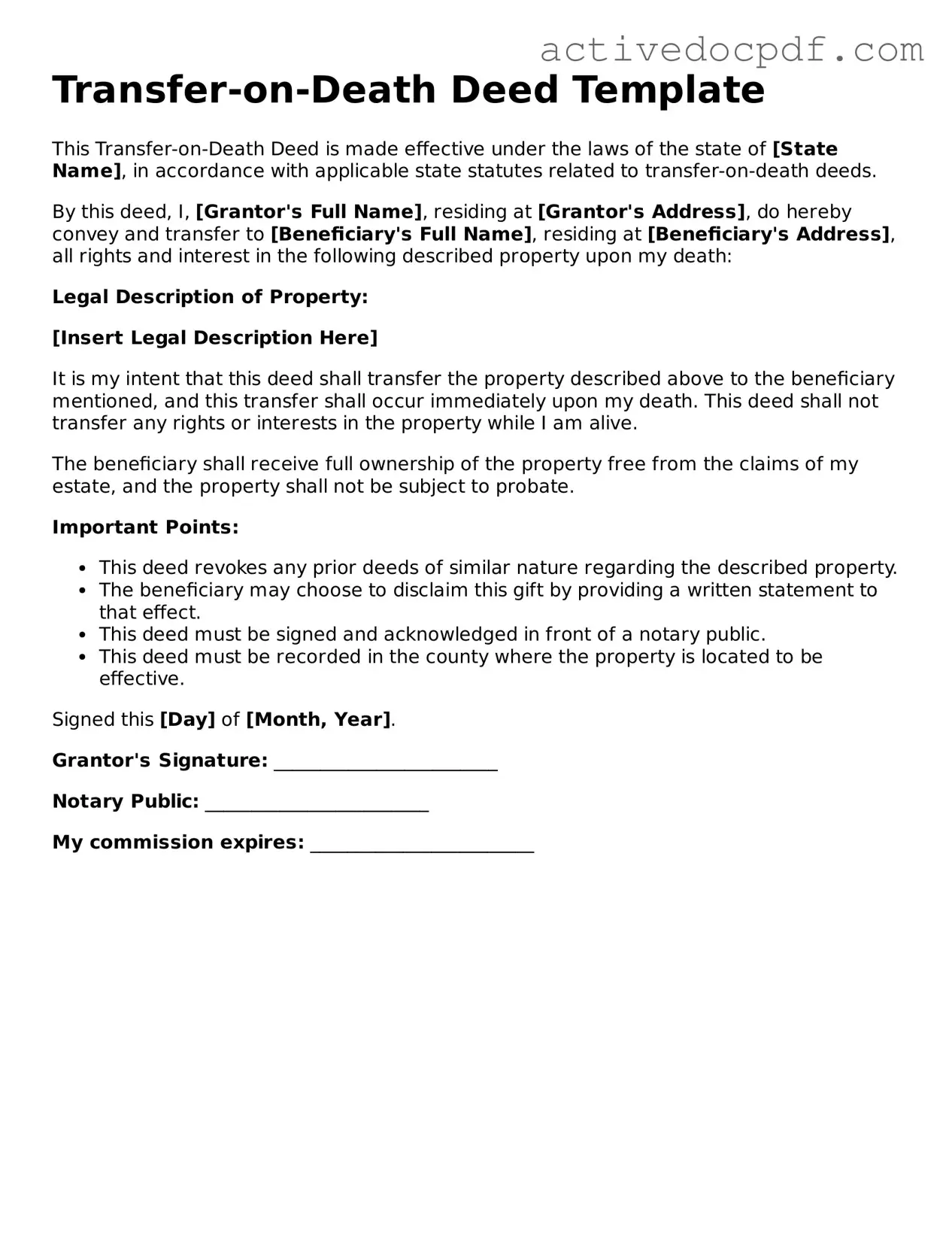What is a Transfer-on-Death Deed?
A Transfer-on-Death Deed (TOD Deed) is a legal document that allows a property owner to transfer real estate to a beneficiary upon their death. This deed does not take effect until the owner's death, allowing the owner to retain full control of the property during their lifetime.
How does a Transfer-on-Death Deed work?
When the property owner passes away, the designated beneficiary automatically receives ownership of the property without the need for probate. The process generally involves the following steps:
-
The property owner completes the TOD Deed form, naming the beneficiary.
-
The deed is signed and notarized.
-
The deed is recorded with the appropriate local government office.
Who can be named as a beneficiary in a Transfer-on-Death Deed?
Any individual or entity can be named as a beneficiary in a TOD Deed. This includes family members, friends, or organizations. However, it is important to ensure that the beneficiary is capable of inheriting the property under state law.
Are there any limitations to using a Transfer-on-Death Deed?
Yes, there are limitations to consider:
-
The TOD Deed can only be used for real estate, not personal property.
-
Some states may have specific rules regarding the use of TOD Deeds.
-
If the property is subject to a mortgage, the beneficiary may need to address the mortgage obligations after the owner's death.
Can a Transfer-on-Death Deed be revoked or changed?
Yes, a Transfer-on-Death Deed can be revoked or changed by the property owner at any time before their death. This can be done by executing a new deed or a revocation form, which must also be recorded with the local government office.
What are the tax implications of a Transfer-on-Death Deed?
Generally, a Transfer-on-Death Deed does not trigger immediate tax consequences for the property owner. However, beneficiaries may be responsible for property taxes after the owner's death. It is advisable to consult a tax professional for specific guidance regarding potential tax liabilities.
Is legal assistance recommended when creating a Transfer-on-Death Deed?
While it is possible to create a Transfer-on-Death Deed without legal assistance, consulting an attorney is recommended. Legal professionals can provide valuable insights, ensure compliance with state laws, and help avoid potential issues that may arise in the future.
